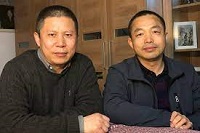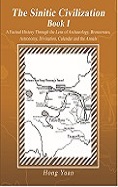
Sinitic Civilization-Book 1
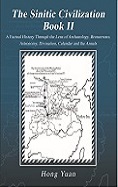
Sinitic Civilization-Book 2
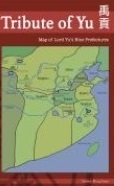
Tribute of Yu
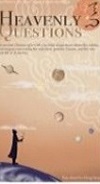
Heavenly Questions
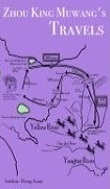
Zhou King Muwang's Travels
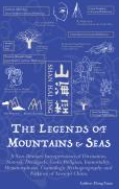
The Legends of Mountains & Seas
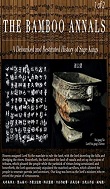
The Bamboo Annals - Book 1
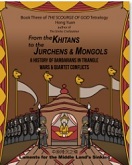
The Scourge-of-God-Tetralogy:
From the Khitans to the Jurchens & Mongols: A History of Barbarians in Triangle Wars and Quartet Conflicts
(available at iUniverse;
Google;
Amazon;
B&N)
|
|
PROFESSOR WEI CHU-HSIEN
& "CHINA AND AMERICA"
This section is to explore ancient China's contacts with the American Continent.
In this section, this webmaster will transcribe
Wei Chu-Hsien's studies.
Prof. Wei Chu-Hsien, a student of Wang Guo-wei, Liang Qi-chao, Chen Yin-ko and Li Chi in 1926's Tsing-Hwa University of Beijing, had published a book called China and America - Volume One in March of 1982 via Taiwan's shuo wen shu dian bookstore.
As Wei Chu-Hsien noted, he had been tormented by the fact that it was difficult to find translators who knew and understood the ancient classics good enough to translate his book into English.
This book's translation, in this webmaster's opinion, might not happen for any time soon as China's most important matter would be rectification of the modern history so that the Chinese people would not have to wear the communist pigtail for 300 plus years to come.
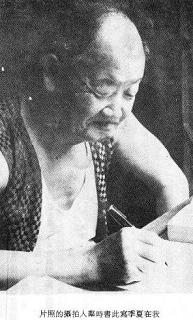 In "China and America - Volume One", Prof. Wei Chu-Hsien stated that he, first coming across in 1961 a passage on six birds which flew backward as recorded in The Spring and Autumn Annals, had linked the 'yi' bird to America's hummingbirds.
(Prof Wei could be wrong about the hummingbird speculation.
Confucius' abridged chronicle Chun-qiu, which carried the record about five meteorites striking the Soong Principality and six 'yi' birds flying backwards during the 16th year of Lu Lord Xigong, or 644 B.C., was expounded in Zuo Zhuan as something to do with the strong gusty winds that beat back the birds' efforts at flying forward.
The 'yi' birds were known in Chinese as some kind of fish-preying herons that were painted at the top of the ships as a propitious sign.)
In "China and America - Volume One", Prof. Wei Chu-Hsien stated that he, first coming across in 1961 a passage on six birds which flew backward as recorded in The Spring and Autumn Annals, had linked the 'yi' bird to America's hummingbirds.
(Prof Wei could be wrong about the hummingbird speculation.
Confucius' abridged chronicle Chun-qiu, which carried the record about five meteorites striking the Soong Principality and six 'yi' birds flying backwards during the 16th year of Lu Lord Xigong, or 644 B.C., was expounded in Zuo Zhuan as something to do with the strong gusty winds that beat back the birds' efforts at flying forward.
The 'yi' birds were known in Chinese as some kind of fish-preying herons that were painted at the top of the ships as a propitious sign.)
For the next ten years, Prof. Wei began to compile 81 essays, totaling 1.4 million characters, on ancient China's contacts with ancient America which was separated from each other by a 56-mile stripe of the Bering Straits but with two Diomede Islands in the middle. Wei Chu-Hsien, at one time, organized a Pacific-crossing raft trip, which almost succeeded in reaching the western American coast.
Wei Chu-Hsien met Prof. Lau Tun-li of SUNY in 1970 and began to exchange opinions as to the Amerindian heritage such as:
i) praying for rain, ii) the ancestral stone worshipping, and iii) the Chinese inscriptions found in America. In 1969, a HK publishing house first published a table of contents about the book which was entitled "The Chinese Discovered America !" Wei Chu-Hsien stated that he had to use the subscription fees from some donors for sustaining his impoverished 'filling lines with characters' career.
Wei Chu-Hsien, in his Backword, felt that his theory had been vindicated by the discovery of stone anchors near the California coast in November 1982.
Wei Chu-Hsien spent considerable time reading into the ancient classics and excavated some interesting points covering more than the American continents: Wei Chu-Hsien pointed to Chu Ci (i.e., the Chu Principality poems) and Wai Guo Tu (i.e., the foreign country maps) for records of a land similar to Australia where the weather was hot in winter and cold in summer and where the grass died away in summer and grew luxuriant in winter; Wei Chu-Hsien further validated the records of the southern hemisphere by pointing out two incidents of the sun eclipse as recorded in The Spring and Autumn Annals; and Wei Chu-Hsien emphasized the cross emblem on the tombstones of some nobles from the Southern Dynasties in Nanking for the spread of Christianity to southern China 1500 years ago.
Wei Chu-Hsien analyzed the character 'long' for dragon and derived a conclusion that it was originally in the form of a 'king snake' (cobra) which the ancient Indian circus people had brought over to Shang China. Wei Chu-Hsien also analyzed the character for phoenix to derive a conclusion that the ancient Indonesians had brought the 'jile-niao' peacock kind of red birds to China.
The Dragon totem could also be a lizard. Wei Chu-Hsien mentioned that the 'Shang Ruins' had produced some 4-leg and 1-tail lizard which the Shang Chinese treated as dragon and that some ancient emissary to Korea mentioned that the ancient Ryukyu people treated the lizard as a dragon, too. On the oracle bones, the dragon, in a third form, could be seen as similar to the sea-horses.
(In Han Dynasty, more than 2000 years ago, Dongfang Shuo had been speculated to have travelled to the Arctic area. The basis of this claim would be Dongfang Shuo's writings in the preface to Hai-nei [around the seas] Shi Zhou [ten prefectures] Ji [records] in regards to travelling to Zhu-ling [red hill], Fu-sang and Shen-hai [mirage sea] to have experienced the 'extreme darkness' at 'ming-ye [dead night] zhi [whereof] qiu [hill]' and the 'extreme daylight' at chun-yang [pure sun] zhi [whereof] ling [hill]' for six months, respectively.
Furthermore, in the section Bei Huang Jing [northern wilderness] of Shen-yi Jing [supernatural], Dongfang Shuo talked about a kind of frozen 'xi shu' mice] inside of the [arctic] ice that was as thick as one hundred 'zhang' [ten feet].
Dongfang Shuo, however, was noted for infatuating Han Emperor Wudi in saying the emperor had exceeded the three sovereigns and five thearchs.)
The Dao-yi (Island Alien) Designation, & Fu-sang
Sima Qian's Shi Ji stopped at Wudi's overthrow of Wei Man Choson (Korea); in the description about Xu Fu's elixir-seeking journey, Sima Qian did repeat the ancient Chinese legends about the islands of Peng-Lai, Fang-Zhang and Ying-Zhou (land in the sea).
Chen Shou's San Guo Zhi covered the island of Japan and grouped the early Japanese in the section on Dong-yi (Eastern Yi). Later history records referred to the Japanese as Dao-yi (the Island Alien).
The ancient Chinese had different terms for the barbarians in four directions. The designation of misnomer Dong-yi (Yi-of-the-East) will include people in today's Manchuria, Korea and Japan. In the early times, the Yi was associated with the word 'niao' for bird, and there were eight to nine different 'niao-yi' people in the east. The Shang Dynasty people were recorded to have treated 'Xuan Niao' (i.e., the Black bird, possibly sparrow) as their totem. The Manchu legends as to the birth of their founder had something to do with birth-mother swallowing the red fruit dropped by a bird.
Tuoba Wei Dynasty, in return for being called the nickname of 'suo lu' (pigtailed enemies), called the southern Chinese by a derogatory name of 'niao yi' (i.e., the bird aliens) for possibly the southern Chinese pitched accents or a generic kind of name for the southeastern Chinese and islanders.
In the later times, the Yi designation would be associated with a word 'dao' for island, pointing to the barbarians in East China Seas. (Both the character 'niao' and 'dao' looked quite close and might have corrupted consecutively during the course of history.) Yi is more an inclusive word to mean the aliens. The big Korean school of thought, touched on in prehistory section, claimed that the Koreans were true descendants of the Dongyi people.
Yu Gong (Lord Yu's Tributes) was more precise in making a distinction among the Yi people, listing the Dao-yi (island Yi) in the ancient Ji-zhou prefecture [who came from today's Liaodong Peninsula by sea, using the Jie-shi mountain around today's Mountain and Sea Pass as the beacon tower equivalent, and sailed into the ancient Yellow River for surrendering tributes], the Yu-yi [sea corner Yi] and Lai-yi [the Laizhou prefecture Yi] in the ancient Qing-zhou prefecture, the Huai-yi [the Huai-shui River Yi] in the ancient Xu-zhou prefecture, the Niao-yi-bird totem Yi] in the ancient Yang-zhou prefecture, plus the He-yi in the ancient Liang-zhou prefecture.
Yu Gong (Lord Yu's Tributes) made a difference between the Dao-yi and Niao-yi while the two characters later corrupted into each other to mean the wrong Yi group, i.e., the island Yi in today's southeastern Manchuria being swapped to be the bird totem Yi in the Yangtze River area.
In the modern times, the Jie-shi mountain, i.e., Mt. Jieshi, was disputed to be somewhere on today's Shandong peninsula, which was wrong.
Cao Cao, returning from his triumphant campaign in today's southern Manchuria in the autumn of A.D. 207, came to Mount Jieshi, i.e., the ancient landmark for the seafarers to enter the Yellow River river course, wrote a poem Guan Cang Hai (observing the expanse of the seas), stating that the sun and moon traveled in the seas as if having their home there and that the starry Milky Way shined on the seas as if having their home there: 'ri-yue zhi xing, ruo chu qi zhong; xing-han can-lan, ruo chu qu li'.
The Island Statelets Beyond Japan:
Chen Shou's San Guo Zhi recorded dozens of statelets on the Japanese islands, including Queen Beimihu (Himiko)'s Wa Statelet, the Gounu-guo statelet under a king in the south, and a pygmy statelet to the south of Wa, etc. Also recorded would be two statelets to the southeast of Japan, i.e., the Luo-guo (naked body) statelet and the Heichi-guo (black teeth) statelet, which could be reached by travelling for one year on boat. Some Japanese historians speculated that the two statelets to the southeast of Japan must have been located in Central or South Americas. Yao Silian's Liang Shu (history of the Southern Liang dynasty) further mentioned that the two statelets of Luo-guo and Heichi-guo were 4,000 Chinese li distance to the southeast of Japan or 1-year sea journey by boat.
(Conflict: 4,000 Chinese li distance or one-year boat travel, in my opinion, could not match with the distance of 7000 li between South Korea and Japan.
http://www.os.xaxon.ne.jp/~sinkodai/efuruta/esss.html stated that "San-kuo-shih or Three Country Record does not use the distance unit of li to be 435 meters as used during the Chin
or Han dynasty Period but rather it uses the unit adopted by the Wei and Western Chin dynasties, which is that one li is approximately 77 meters."
Note ancient chronicles usually built upon the previous dynasty's records via direct paragraph-by-paragraph citation.
In the later chronicles, more reasonable description was given as to the distance and time of travel to reach the Luo-guo (naked body) statelet and the Heichi-guo (black teeth) statelet, as well as the Fu-sang statelet.)
Liang Shu also recorded an island 10,000 li to the southwest of Japan where the people, of black body and white eyes, were said to have delicious meat on their body; it said that the travelers would shoot to kill those islanders for eating them.
To the northeast of Japan, Liang Shu recorded a Wen-shen-guo (tattoo) statelet that was located 7,000 Chinese li distance away from Japan; 5000 li to the east of Wen-shen-guo would be the Da-han-guo [great Han] statelet. (In this webmaster's opinion, Wen-shen-guo would be somewhere near Hokkaido, while the Da-han-guo statelet would be likely in the Aleutian Islands & Alaska.)
Note that the ancient Chinese books might not be accurate. Bei Shi (History of the Northern Dynasties) recorded a big island statelet called the Dan-mou-luo-guo statelet to the south of Paekche. It said that the island, having a span of over 1000 li distance south-north and several hundred li east-west, could be reached by boat after three months' travel, that it had lots of deer, and that it was a vassal of Paekche. The conflict here was: Three months' travel would probably lead to the Southeast Asian Islands or today's Australia.
Since Bei Shi separately described the Liuqiu (Ryukyu) island, Dan-mou-luo-guo might not be the same as Ryukyu. The Liuqiu (Ryukyu) island was recorded to be reachable after 5 days of boat travelling.
Later, another history chronicle might point to today's Jeju Island of Korea as the Dan-mou-luo-guo statelet.
In more recent history books, around the Sui-Tang dynasties, the island of the Dan-mou-luo-guo statelet was pinned down to be first a vassal of Paekche and then of Silla, which was not far away off the coast of Korea.
Hence, this webmaster believed that the Dan-mou-luo-guo statelet was in fact today's Jeju Island.
The above records on the islands to the east pointed to a continuous Chinese exploration into the Pacific, with the Da-han-guo statelet named after the name of China's Han Dynasty.
The Bona Fide Coastal People
In the prehistory section, we made a point about the prehistoric geography in stating that the Ji-shui River was often juxtaposed against the 'Jiang1' River to the [south]east in prehistoric China, with the 'Jiang1' River speculated to be the modern Yi-he River on the southern Shandong peninsula --which could be the division line between the continental people and the bona fide coastal people.
In the ancient times, the Jiang1-shui River appeared to be a parallel river to today's Han-shui River, with the two rivers had origin in the mountains of the bird-bat-same-cave mountain and Count's Tomb mountain.
As expounded in this webmaster's book on The Sinitic Civilization, the Jiang1-shui River was at most extended to abbreviation for the Jiang1-guo state which was situated with the Huang-guo state along the Huai-shui River.
Note that the bona fide coastal people was relative to the continental peers, and might not be bona fide at all as the coastal Mongoloid entrants, i.e., the O2-haplotype people could have evicted the O1-haplotype people towards Taiwan and Southeast Asia about 5000-6000 years ago while the two groups previously could have evicted the C-haplotype people to the seas (i.e., Melanesia), with the late-coming O1-haplotype people and the early C-haplotype people mixing up to become the modern dual-genetic-origin Micronesians and Polynesians in the timeframe of about the last 800-3000 years ago, with the seafarer's arrival in Fiji timestamped 3000 YBP, Hawaii about A.D. 500, and Aotearoa A.D. 1200.
Professor Zhang Guangzhi (Kwang-chih Chang), having studied the remains on the Pacific islands, concluded that the seafarers arrived in Saipan about 1527 B.C., plus minus 200 years; Hawaii about A.D. 1004 plus minus 80 years; and the Easter Islands about A.D. 380, plus minus 100 years.
In 78 B.C., there was some strange stone with tripods that appeared on the Shandong peninsula, and in the area of Mt. Taishan.
It was ascertained by the modern archaeology to be a so-called 'shi-peng' or the stone shed religious site that was observed to have spread from the Chinese coast to the Pacific Islands, something to do with the ancestors of the Pacific Islanders.
Across the Pacific Ocean islands, the stone adze, called 'duan-shi ben' in Chinese, were excavated, which showed the continental origin from the Southeast Chinese coastal area.
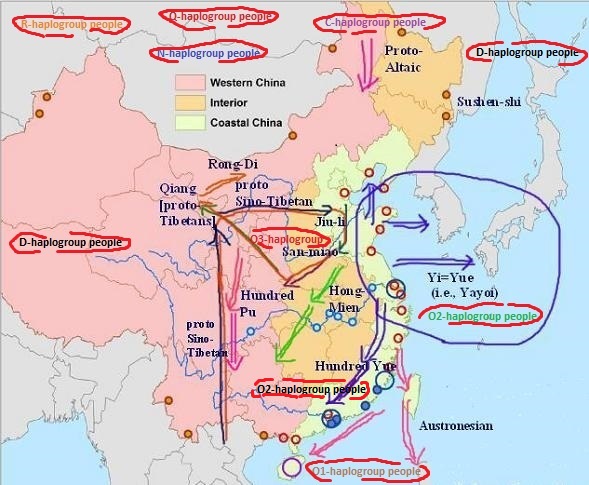
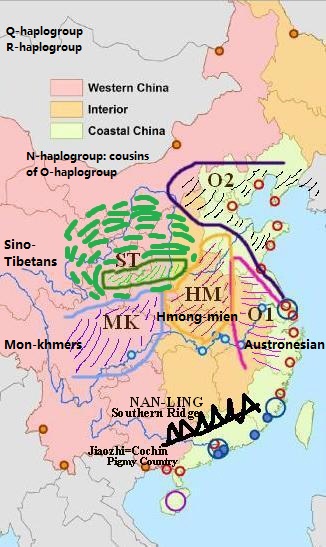
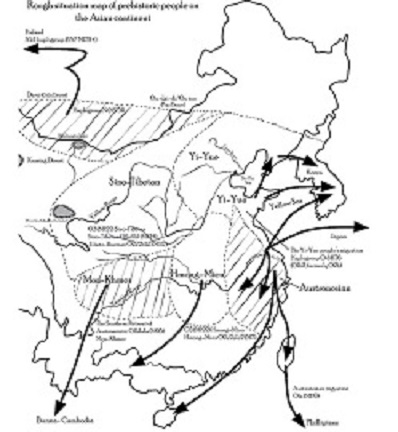
The Fu-sang Statelet:
Liang Shu was noted for its record of the Fu-sang Statelet to the east. The word 'fusang' would later be used by the Chinese for designating Japan in poems; Wei Chu-Hsien validated a separate identity of Fusang from Japan by citing ancient records in regards to the usage of iron in Japan but not in Fusang. The more exact mapping would be to measure distance between statelets in between: a Wen-shen-guo (tattoo) statelet (near Hokkaido?) was located 7,000 Chinese li distance to the northeast of Japan; 5000 li to the east of Wen-shen-guo would be the Da-han-guo statelet (near the Aleutian Islands & Alaska?). The Fu-Sang (Fusang) Statelet was located 20,000 Chinese li distance to the east of Da-han-guo, somewhere near British Columbia or Oregon.
Here, we could see an apparent linkage from China, to Korea, to Japan, to the "tattoo body" country, to the "Great Han" country, and to Fu-sang.
Fu-sang, with apparently mutating designation, was more likely a "physical" locality on the eastern tip of the Shandong peninsula during the Xia Dynasty time period, as recorded by the legendary geography book Shan Han Jing (Records on Mountains and Seas), but was used in the late Zhou Dynasty to designate some fuzzy land in the seas, at about the time Confucius and his disciples were wondering aloud about the whereabouts of the so-called "junzi-guo" (i.e., the Gentlemen's Country) and the Nine Ancient Yi People.
Shan Han Jing (Records on Mountains and Seas), which was commonly known to be compiled (or written) during at minimum the 4th century B.C.E., i.e., after Confucius' time, had apparently applied the "restrictive" definition of Fusang to a broader horizon as a result of the rapid development and invasion of the Sinitic domains, as exhibited by the Yan Principality's invasion of southern Manchuria and northern Korean around 300 B.C.E.
As this webmaster expounded in the book Shan Hai Jing, the "seas" component could be relatively new in comparison with the "mountain" part, namely, after-the-matter-of-known-facts ensuing from the Han empire's expansion.
The seas or overseas' components could be further separated into two groups, i.e., the "inner seas" and the "outer seas" sections that were compiled by Liu Xin (53 B.C.-23 A.D.) and the "within-seas" and the "overseas wilderness" sections that were possibly collected by Guo Pu (A.D. 276-324), with the former two sections possibly synchronizing with the Han empire's military expansion, and the latter two sharing similar contents as Lian-shan Yi (divination on concatenated [undulating] mountain ranges), Gui-cang Yi (returning-to-earth hoarding divination), A.D. 279 Ji-zhong tomb divination texts, and the 1993 Wangjiatai excavated divination texts.
"Great Han" -------------- Fu-sang
/ country
/
/"tattoo body"
/ country
/
/
China ---- Korea ---- Japan
\
\
\
\-------------------------> Luo-guo (naked body country)
Hei-chi-guo (black teeth country)
Both Chinese websites and American websites, e.g.,
had mentioned the story of Monk Huishen and the Kingdom of Fu-Sang (Fusang). The popular belief is that Fusang was located in today's Mexico. Liang Shu stated that during the first year of the Yongyuan Era of the Southern Qi Dynasty, i.e., A.D. 499, a monk by the name of Hui-shen (Huishen or Hui Shen) arrived at Jingzhou prefecture from the Fu-Sang (Fusang) Statelet. Hui-shen claimed that Fu-Sang (Fusang) was to the east of China; that it was located 20,000 li distance from the Da-han-guo statelet; that it was a land full of the Fu-Sang (Fusang) wood (speculated to be North American corn by the Chinese or cactus-like agave by the Americans); that the Fu-Sang (Fusang) leaf was similar to the Tong-tree leaf; that Fu-Sang (Fusang) looked similar to bamboo shoots at its early stage; that the Fu-Sang (Fusang) people ate it for food; that Fu-Sang (Fusang) appeared to be of red color and tasted like pear; that Fu-Sang (Fusang)'s surface could be used for making into cloth or cotton. Hui-shen further stated that the Fu-Sang (Fusang) people had log cabins but no cities; that Fu-Sang (Fusang) had a written language and used the Fu-Sang (Fusang) skin (i.e., bark) for making into paper; that Fu-Sang (Fusang) had no army or weapons; that Fusang did not treasure gold or silver; that Fu-Sang (Fusang) had two prisons, with people of minor offence going to the north prison while serious offenders going to the south prison; that amnesty went to the north prison, only; that the king possessed drums and wore different colored robes for different seasons; that the Fu-Sang (Fusang) people used buffalo horns for holding stuff; that Fu-Sang (Fusang) possessed horse (?) carts, buffalo carts and deer carts; that the Fu-Sang (Fusang) people used deer milk for making cheese; that Fu-Sang (Fusang) was abundant with walnuts; that Fu-Sang (Fusang) had copper but no iron; that Fu-Sang (Fusang) previously had no Buddhism but a five-member monk team, headed by Monk Biqiu, arrived at Fu-Sang (Fusang) from the Libin-guo statelet (Kabul of Afghanistan) during the 2nd year reign of the Daming Era of the Liu Soong Dynasty, i.e., A.D. 458, and propagated Buddhism there.
|
|
|
|
|
|
|
Sovereigns & Thearchs;
Xia-Shang-Zhou dynasties;
Zhou dynasty's vassalage lords;
Lu Principality lords;
Han dynasty's reign years
(Sexagenary year conversion table-2698B.C.-A.D.2018; 247B.C.-A.D.85)
|
|
The Sinitic Civilization - Book I is
available now at
iUniverse,
Barnes & Noble,
Amazon,
Google Play|Books
and
Nook.
The Sinitic Civilization - Book II is available at
iUniverse,
Amazon and Barnes & Noble.
Check out the 2nd edition preface that had an overview of the epact adjustment of the quarter remainder calendars of the Qin and Han dynasties, and the 3rd edition introductory that had an overview of Sinitic China's divinatory history of 8000 years.
The 2nd edition, which realigned the Han dynasty's reign years strictly observing the Zhuanxu-li calendar of October of a prior lunar year to September of the following lunar year, also cleared this webmaster's blind spot on the authenticity of the Qinghua University's Xi Nian bamboo slips as far as Zhou King Xiewang's 21 years of co-existence with Zhou King Pingwang was concerned, a handicap due to sticking to Wang Guowei's Gu Ben Bamboo Annals and ignoring the records in Kong Yingda's Zheng Yi.
Stayed tuned for Book III that is to cover the years of A.D. 86-1279, i.e., the Mongol conquest of China, that caused a loss of 80% of China's population and broke the Sinitic nation's spine.
Preview of annalistic histories of the Sui and Tang dynasties, the
Five Dynasties, and the two Soong dynasties
could be seen in
From the Khitans to the Jurchens & Mongols: A History of Barbarians in Triangle Wars and Quartet Conflicts
(The Barbarians' Tetralogy - Book III: available at iUniverse;
Google;
Amazon;
B&N).
(A final update of the civilization series, that is scheduled for October 2022, would put back the table of the Lu Principality ruling lords' reign years, that was inadvertently dropped from Book I during the 2nd update.)
|
|
Book II - Table of Contents:
Chapter XXXI: The Han Dynasty's Chronological History p.367
Invasion into the Korean Peninsula p.391
Chapter XXXVI: The Western Expedition, The Kunlun Mountain & Shan Hai Jing p.489
Han Emperor Wudi Seeking Elixir from the Immortals on the Kunlun Mountain p.491
Credible Geography Book on the Mountains Possibly Expanded to Include the Legendary Kunlun Mountain p.493
Unearthly Things in the Mountains' Component of The Legends of Mountains & Seas p.501
The Divination Nature and Age of the Seas' Component of The Legends of Mountains & Seas p.506
Chapter XXXVII: The Legends of Mountains & Seas (Shan Hai Jing) & The Ancient Divination p.520
The Divination Nature and Age of the Seas' Component in The Legends of Mountains & Seas - Debunking the Theory of "Asiatic Fathers of America"
Shan Hai Jing, in the "within-seas" and "great [overseas] wilderness sections, contained three interesting matters, namely, an alternative history of the thearchs that differed from the five thearchs' lineage in Shi-ji and Da-dai Li-ji; the wind gods that had the trace from the oracle bones of the Shang dynasty time period; and the divination topics such as Xia King Qi3's bestriding the flying dragons to rise to the heaven.
It could be speculated that the mythic writings in the seas' components of Shan Hai Jing were the result of the emperor's seeking the panacea or elixir. Note that dozens of diplomatic missions were sent to the west, with an apparent side order for ascertaining the locality of the legendary Kunlun Mountain where the immortals lived. If the mountain sections of Shan Hai Jing was written before Zhang Qian's trip to the west, the writer(s) of the sea sections, possibly following the "mountains" component of Shan Hai Jing (i.e., The Legends of the Mountains and Seas), expanded the writings on Kunlun, the Queen Mother (old woman), and the origin of the Yellow River, etc., into the chapters known as "The Book on the Within-Seas", "The Book on the Inner Seas", "The Book on the Outer Seas", and "The Book on the [Overseas] Wilderness" --a highly speculative book that talked about the panacea, the immortals, the various gods, as well as the ancestral human gods like Tai-hao the Senior (i.e., wind or phoenix-surnamed ancestor), Huang-di the Yellow Thearch, Yan-di the Fiery Thearch, Shao-hao the Junior (i.e., Ji3-surnamed ancestor), Overlord Zhuanxu, Overlord Di-ku, Overlord Yao, Overlord Shun, the founder-kings of the Xia, Shang and Zhou dynasties, as well as mythical figures like Lord Di-jun, et al. (Depending on the coverage of the overlords in different sections of the sea components of Shan Hai Jing, there were unfounded claims among the modern historians that those particular sections of the book were from some particular past dynasties like Xia or Shang.)
The mountain part of Shan Hai Jing, while having its geographical layout built on top of Yu Gong (Lord Yu's Tributes), was not written as a geography book but with possibly two purposes, namely, a proclivity for expounding sacrifice and primitive prophecy conducted on the mountains and hills, and a description of the treasures and wealth of the mountains. The second purpose was similar to the forgery Han dynasty political economy book Guan Zi --which, like the "Salt & Iron Debate" of the Han dynasty, contained chapters on the mountains such as 'Shan-guo Gui' (mountain nations' track, i.e., finance management), Shan Quan Shu (mountain's whimsical mathematical strategy), and Shan Zhi Shu (mountain's utmost mathematical strategy), containing similar description of the treasures and wealth of the mountains. The writings sharing the common geographical data or similar raw materials with the mountain part of Shan Hai Jing included Qu Yuan's poems like Tian Wen (asking heaven); Mu-tian-zi Zhuan (Zhou King Muwang's travelogue); and Lv-shi Chun-qiu.
(The four eastern mountain ranges were mistakenly appropriated to North America by Henriette Mertz in the 1958 book Pale Ink, which was the author's overzealous pursuit of the topic of Asiatic fathers of the Amerindians. Henriette Mertz also had the wild imagination about the deep gully beyond the east sea, stating that it was the Grand Canyon of Arizona. Henriette Mertz, who had erroneously appropriated the mountains and valleys in Shan Hai Jing to North America, had some validity as to the link of monk Hui-shen to Quetzalcoatl.)
In contrast, the seas or overseas' components of Shan Hai Jing transcribed the unearthly animals, human-faced animal gods and strange-looking people in the mountain part of Shan Hai Jing into the names of countries or tribes as seen in Lv-shi Chun-qiu and Han dynasty book Huai Nan Zi, exhibiting the seas or overseas' components to be later than the mountain part. The seas or overseas' components could be further separated into two groups, namely, the "inner seas" and the "outer seas" sections that were compiled by Liu Xin of the Han dynasty and the "within-seas" and the "overseas wilderness" sections that were collected by Guo Pu of the Jinn dynasty, with the former two sections possibly synchronizing with the Han empire's military expansion, and the latter two sections sharing similar contents seen in the divinatory books Lian-shan Yi and Gui-cang Yi, including the Wangjiatai excavated divination texts of the 3rd century B.C. and possible materials from the Ji-zhong tomb excavation materials that were possibly a few decades earlier than the Wangjiatai texts.
Gui-cang Yi, like what the seas' component of Shan Hai Jing did in extensively copycatting Qu Yuan's and the other Chu Principality poems, had taken some of the poems' concepts as part of the divination texts, such as the "Feng-xue" (wind cave) in poem Bei Hui-feng [feeling sad about the percolating wind], and the "Yun-zhong[-jun]" (god in the cloud) and "Dong-jun" (eastern god) deities in poem Jiu Ge (nine songs), for example. While the divination in the seas or overseas' components of Shan Hai Jing could be relatively old, like the age of the Ji-zhong tomb and Wangjiatai excavation texts, the materials had apparently undergone revision through the Zhou, Qin, Han and Jinn dynasties, for about half millennium's time, as seen in Guo Pu's citation of eight polars in Qi3-shi1 of Gui-cang Yi to describe Xi-he2's reign in the empty mulberry land under the 'cang-cang' blue sky, as well as in the erroneous interpretation of Xia King Qi3's rising to the sky to be a high lord's guest as some theft of heavenly music, not an award from the high lord.
Simply speaking, the seas or overseas' components of Shan Hai Jing, though carrying the names of countries like in today's Korea, Chinese Turkestan and India, etc., were not about geography at all but divination. The divination materials, similar to those in Shi1 Fa, Gui-cang Yi, the Wangjiatai divination script, and the divination in Mu-tian-zi Zhuan, served the same augury purpose of the late Warring States time period, albeit possessing their separate freelance or freewheeling traits.
For example,
The one eyed son of Lord Shaohao in the "great northern wilderness" (Da Huang Bei Jing) section of Shan Hai Jing, like the one-hand and one-eye 'shen-mu-guo' (the deep eye socket) state in the "Northern Outer Seas" section, which was speculated to be the legendary one-eyed state Arimaspi that was described by Herodotus in Histories as located north of Scythia and east of Issedones and linked to the three-eye stone statutes of the Okunev Culture in Minusinsk, could have its source in some one-eye bird in the northern mountain range of Shan Hai Jing, and the one-eye and three-tail 'huan' foxlike animal on Mt. Yiwang-zhi-shan in the western mountain range.
Some conclusive statement could be made about the alternative divination methods other than Zhou Yi (i.e., Yi-jing). No matter Gui-cang Yi, Shi1 Fa, the Wangjiatai divination script, Mu-tian-zi Zhuan, or the mountain part and seas' part of Shan Hai Jing, they served the same augury purpose of the late Warring States time period, that possessed their separate freelance or freewheeling traits in the land of the Wei Principality in the case of the Ji-zhong tomb's type of Gui-cang Yi divination or in the land of the Chu Principality in the case of Shi1 Fa and Wangjiatai divination bamboo slips. The line augury objects in Shi1 Fa under the stalk numbers "eight", "five" and "four", with similarity to the augury topics in Zhou Yi and Gui-cang Yi's four trigram images or diagrams, could be said to be like what was seen as the primitive prophecy in the mountain part of Shan Hai Jing. Roughly, Shi1 Fa matched the primitive prophecy in the mountain part of Shan Hai Jing, while Gui-cang Yi, namely, the Wangjiatai scripts or the Ji-zhong tomb's type of Gui-cang Yi divination, matched the seas' part of Shan Hai Jing as far as divination was concerned.
For details, refer to
THE SINITIC CIVILATION Book II, available on Amazon,
B&N.





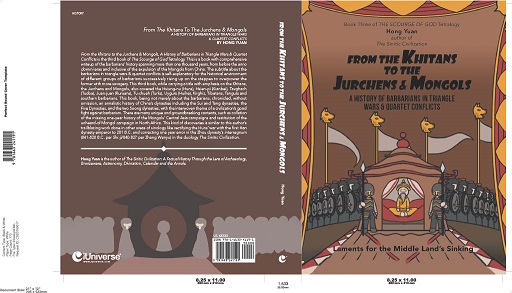
Epigraph|Preface|Introduction|T.O.C.|Afterword|Bibliography|References|Index
(available at iUniverse|Google|Amazon|B&N)
|
|
Note that most of secondary records had errors in regards to the five-monk team. Hui-shen or Hoei-shin did not appear to have taken part in the A.D. 458 journey to Fusang. He merely returned to China in A.D. 499. This webmaster's speculation is that the trips from China to ancient America was frequent enough for Hui-shen to go to America and return to China on a different ship. Should Monk Fa-Shien had returned to China from India by ship at the timeframe, why would it not be possible that Monk Hui-shen and et al., could have travelled to ancient America? (It was said that Hui-sheng could be the legendary God Viracocha.)
This webmaster picked up Prof. Wei's book again and found out that the Professor had listed the abundant written texts, from ancient Chinese chronicles, about the existence of i) the 'Deep Sea Valley' beyond Japan, ii) the 'Feather Mountain' island in the possibly Pacific Northeast, iii) the 'Brown Bear' stories, and iv) the Redwood Trees. Prof. Wei had citations of dozens of entries about the Redwood Tree, which was known to the ancient Chinese as 'Fu-sang' in Chinese texts prior to B.C.E. eras. Apparently, the ancient Chinese in A.D. eras, i.e., Monk Hui-shen of the 5th century, had mutated the ancient term 'Fu-sang' to mean something different from the Redwood tree.
Prof. Wei Juxian validated that though America had no iron, ancient Peruvians had imported iron from ancient China for cutting the stones in the palace construction. Also, Prof. Wei Juxian validated ancient Chinese texts [prior to B.C.E. eras] as to the abundance of silver and gold in ancient America that the American natives did not treasure the metals as recorded in "Liang Shu".
Senior scholar Wei Juxian was wrong about the interpretation on the brown bears.
Wei Chu-Hsien pointed out that the ancient Gun legends in Shan Hai Jing (The Legends of Mountains & Seas) implied a possible migration of Gun's people to the American continents since Gun's body turned into 'huang xiong' [American Brown Bear] in the water. This was again simplistic as the so-called 'huang xiong' [American Brown Bear] might not mean 'bear' at all but a different kind of animal, like dragon.
In Lu Lord Zhaogong's 7th year records of Zuo Zhuan, the feather mountain and the feather pond where Gun's spirits mutated into a brown bear would be actually the 'Xia jiao' or the Xia capital city's outskirts where the oblation temple was, some pilgrimage that the lords of the three dynasties visited in reverence.
Zuo Zhuan , in 535 B.C., carried an interesting "die traumdeutung", which was an interpretation of dreams by Zheng minister Zi-chan to Jinn minister Haan-xuan-zi in regards to Jinn Lord Pinggong's illness:
When told that the Jinn lord, who dreamt about a brown bear entering his bedroom, had been ill for three months and all the mountain and river gods had received oblation, Zi-chan replied that the brown bear was the spirit of Gun, i.e., father of Lord Yu, who were killed at Mt. Yushan by Yao for the failure in the flood control; that Gun's spirit hence became the god of the Xia dynasty's outskirts oblation after the brown bear entered the Yu-yuan or the feather pond; that the three dynasties of Xia, Shang and Zhou had all made sacrifice to Gun; and that the Jinn state, which inherited the hegemony role from the Zhou court, should undertake the king's Xia-dynasty-outskirts-oblation sacrifice.
Shui Jing Zhu, a book annotated by Lih Daoyuan, made a statement on the Yi-shui River, stating that "looking south towards the Shan-zhu waterfront, which extended for 10-li distance, with fish reeds entangling, you saw the place that was transformed through the body of Lord Yu's father.
Archaeological findings of Northwest China ascertained some kind of the 'heaven' and 'bear' totem on the bronzeware, which was taken to be what the Zhou king claimed to be the Ji-surnamed people's origin from 'tian yuan' [the heavenly turtle sector division of the ecliptic or the zodiac-equivalent Aquarius Palace].
In Shan Hai Jing (The Legends of Mountains & Seas), there was a frequent citation of "fu-sang", a word to denote Japan or the Americas in the future.
This webmaster believes that there were two or three denotations for this word. At the very beginning, like during the time of ancient overlords Yao-Shun-Yu and Xia Dynasty, Fu-sang was more likely a "physical" locality on the eastern tip of the Shandong peninsula.
(In the texts related to the book Shan Hai Jing, three kinds of trees were differentiated, like 'ruo-mu', 'jian-mu', and 'xi-mu', to mean some kind of tree at the sunrise area, the equatorial line, and the sunset area.
As to Shan Hai Jing, as discussed here, the mountains were about the mountain ranges of Sinitic China.
The four mountain ranges were mistakenly appropriated to North America by Henriette Mertz in the 1958 book Pale Ink, which was the author's overzealous pursuit of the topic of Asiatic fathers of the Amerindians.
Henriette Mertz also had the wild imagination about the deep gully beyond the east sea, stating that it was the Grand Canyon of Arizona.
The sections on the seas could be some imaginary add-on after let's say Qu Yuan's poems
Tian Wen as the artificial marks were detectable about the cause and effect of the two books, with some paragraphs of the seas' section of Shan Hai Jing being written as some extended interpretation of
Tian Wen.)
This webmaster, after perusing Shan Hai Jing (The Legends of Mountains & Seas), believed that the very early meaning for fu-sang, was exactly what the character "sang" was, namely, the mulberry trees. Apparently, the definition for fu-sang had become mythicized in the later times.
By the 4th century B.C.E. or later, when Shan Hai Jing came into the shape as seen today, it was to designate some fuzzy land in the seas, at about the time Confucius and his disciples were wondering aloud about the whereabouts of the so-called "junzi-guo" (i.e., the Gentlemen’s Country) and the Nine Ancient Yi People. In the ensuing hundreds of years, the locality of "fu-sang" became more precise, namely, about 20,000 li to the east of "Da-han-guo" [which was 5000 li to the east of the tattoo country that in turn was 7000 li to the east of Wa Japan] or 30,000 li to the east of China. The Black-Teeth Country, which used to be located on the Shandong peninsula – as shown in Shan Hai Jing and Huai Nan Zi, was similarly extended to point to a country somewhere in the Americas, that could be reached by travelling on boat for let’s say one year.
After the barbarians' rampage of the 4th century, Tuoba Wei Dynasty & the Southern Chinese Dynasties, respectively, renewed historical contacts with the rest of the world, i.e., Japan to the east, ancient Burma/Indochina/India/Ceylon to the south, Central Asia to the west, and Arab/Persia/Roman further away.
Nevertheless, Japan's history in the Fourth Century became forever "mysterious" as a result of Northern China's disintegration.
With Tuoba Wei China developing the northern Silk Road, Liang Dynasty of southern China underwent a prosperous sea route exchange with the rest of the world. Monk Fa-Shien's return trip from India had been widely analyzed to infer a possible blow-away to the Mexico coastline before going the opposite direction to China.
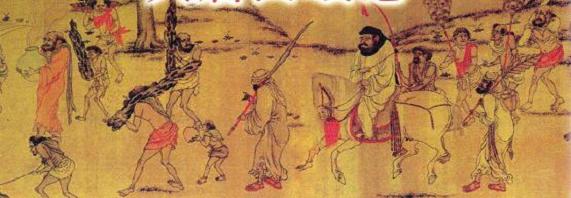 Often researched upon by scholars would be a drawing by Liang Dynasty's Emperor Yuandi, entitled "zhi [duty or post] gong [tribute] tu [picture]" [Liang chih-kung-t'u]. Liang chih-kung-t'u, whose original drawing possibly destroyed together with 140,000 volumes of books at the time of Emperor Yuandi's death, was supposed to be a recollection drawing works of the emissaries who had visited Jingzhou the garrison city where Yuandi had stationed throughout dozens of years. The point to make here is that Liang Dynasty had apparently received delegations from 2-3 dozen statelets covering the countries mentioned earlier. The drawing's minute details about the ancient countries in today's Afghanistan and Iran and their emissaries absolutely corroborated the facts that China's linkage with Central Asia was live and frequent, yielding substantial validity to the person of Monk Hui-shen and his story of the trip to the American continent.
Often researched upon by scholars would be a drawing by Liang Dynasty's Emperor Yuandi, entitled "zhi [duty or post] gong [tribute] tu [picture]" [Liang chih-kung-t'u]. Liang chih-kung-t'u, whose original drawing possibly destroyed together with 140,000 volumes of books at the time of Emperor Yuandi's death, was supposed to be a recollection drawing works of the emissaries who had visited Jingzhou the garrison city where Yuandi had stationed throughout dozens of years. The point to make here is that Liang Dynasty had apparently received delegations from 2-3 dozen statelets covering the countries mentioned earlier. The drawing's minute details about the ancient countries in today's Afghanistan and Iran and their emissaries absolutely corroborated the facts that China's linkage with Central Asia was live and frequent, yielding substantial validity to the person of Monk Hui-shen and his story of the trip to the American continent.
|
|
Hui-shen also stated that over 1000 li distance to the east of Fusang would be a country called Nü-guo (i.e., the women statelet). Nü-guo was speculated by Minhua Zhang to be the Amazon statelet in South America. The Nü-guo women were said to have lighter skin, hairy body, and long hair that dangled to the ground. Liang Shu further cited a personal account, stating that a Jin'an area traveler was blown to an island of women during the 6th year of Tianjian Era (i.e., A.D. 507).
Henriette Mertz, who had erroneously appropriated the mountains and valleys in Shan Hai Jing (The Legends of Mountains & Seas) to North America, had some validity as to the link of monk Hui-shen to Quetzalcoatl.
The Validation of Existence of Hui-shen in Connection with German Lootings of Three Stone Monuments in 1899
In 1899, in the aftermath of the "Clergymen Incident of Rizhao (sunshine shower) County",
the Germans looted China's treasures prior to evacuation, including, among others, three ancient stone monuments at the coastal Mt Tiantaishan in Rizhao County, i) the Ju-guo ancestral reverence monument at the Wangxianjian (fairy seeking) Creek (possibly erected by the sun-worshipping Ju-guo people from the Shang-Zhou dynasty time period), ii) the reconstruction monument for the Shifeng-shi (stone phoenix) Monastery of Tanggu (spring valley), which was first built by Monk Huishen as Tiantai-min-shi [pity of the heavenly terrace] Monastery in the mid-5th century prior to his overseas trip to Fu-sang (?ancient Mexico), was rebuilt a second time by Silla monk Zhi-yin as the Silla Monastery in the early Tang Dynasty, and was revamped by the Qin Dynasty descendants as Shi-feng-shi Monastery during Ming Dynasty; and iii) the stone monument bearing three characters of "Ri Zhao Xian" (Rizhao County) that was erected by Korean Confucian Zheng Mengzhou when visiting the Silla settlement on the Shandong coast in First Ming Dynasty Emperor Hongwu's era.
As Hong-fa, Miao-zhen and Xiang-fo, students from the Chinese Buddhist College, had validated, the reconstruction monument for the Shifeng-shi (stone phoenix) Monastery talked about three disasters the monastery suffered in the early history after the initial reconstruction by Monk Hui-shen. The specific reference was pointing to Monk Hui-shen's construction of Tiantai-min-shi [pity of the heavenly terrace] at the foothill after collecting the corpses of starvation victims, followed by a) destruction to the monastery due to Northern Wei Dynasty emperor Taiwudi's religious persecution in A.D. 444,
b) destruction to the monastery due to Northern Zhou Dynasty emperor Wudi [reign 556/557-578]'s prohibition of Buddhism,
and
c) the destruction of the rebuilt Silla Monastery by fire during Ming Dynasty emperor Jianwendi's era.

The Legends of Mountains & Seas
Citing Gao Seng Zhuan (biographies of the distinguished monks), written by Liang Dynasty monk Hui-jiao, the three Buddhist College students pointed out that Hui-shen was a disciple of renowned monk Hui-ji while Hui-ji was recorded to be born in A.D. 411, initiated into monkhood in A.D. 431, travelled to southern China to spread Buddhism and recruit the disciples, and passed away in southern China in A.D. 496.
It was hence speculated that Hui-shen, after becoming Hui-ji's disciple, travelled to the Shandong peninsula where he built the soul-rescuing Tiantai-min-shi [pity of the heavenly terrace, i.e., the Terrace of "Ullambana" in Sanskrit] monastery at the foothill of Mt. Tiantanshan, where there still exist the remains of Wangxiantai [the terrace for spotting the fairy, i.e., An Qisheng, a legendary figure with whom Qin Emperor Shihuangdi had conversations about the elixirs in the seas, after which Qin Shihuangdi dispatched Xu Fu on an elixir-seeking trip in the East China Sea.]. And it was speculated that after Tuoba Wei Dynasty launched the Buddhism extinction movement in A.D. 444, Monk Huishen departed China for the overseas trip to America.
More about Shan Hai Jing (The Legends of Mountains & Seas) is available at http://www.imperialchina.org/ImperialChina/?p=331
More Recent Records on the Peoples of Sakhalin, Kamchatka, Bering Straits & Alaska
In A.D. 725, Tang set up the Heishui-fu (Blackwater) governor- office at Boli (Khabarovsk), with an army stationed for control over the Heishui and Mohe (Malgal) area. According to Bei-Di Zhuan of Xin Tang Shu, there were on the Kamchatka Peninsula, the tribes of Simu, Junli, Kushui (Qushe), and on its surrounding Islands to the southeast of the Kamchatka Peninsula, the tribe of Moyejie. Alternatively speaking, Simu, Junli, Kushui (Qushe), and Moyejie, etc., were still on the Sakhalin Island as King Meng-bang of the more likely Kamchatka country of Liugui (flowing ghost) was recorded by Dong-yi Zhuan of Xin Tang Shu to have sent son Ke-ye-yu-zhi in A.D. 640 to Tang via the Malgal relay, stating that one month’s travel to the north would be another country called Ye-cha (yaksa/yakkha) where the people had protruding boar’s fang teeth. The Liugui state itself was described to be 15,000-li distance from the Tang capital city of Chang’an, located to the northeast of the Blackwater Malgal tribes and to the north of the Shao-hai (Okhotsk) Sea, and was surrounded by the seas on three sides. Du You’s Tong Dian further claimed that Liugui was fifteen day’s sea travel to the north of Moshe, i.e., Moye or Moyejie.
Later in A.D. 1271, the Mongols campaigned against the Guwei-man barbarians, i.e., Guwei (Kuye, Kuwu, Kuyi) in today’s Sakhalin.
Later in A.D. 1395, Ming dynasty general Zhou Xing was to sweep through northern Manchuria and pacified the raw Jurchens. The Ming dynasty launched garrisons all the way to the Japan Sea and the Amur River estuary, with a ‘Nu’ergan du-zhihui-si’ office established in A.D. 1409 for controlling the natives as far as the Sakhalin Island and the Kamchatka Peninsula. Back in A.D. 1285, the Mongols launched the ‘Dong-zheng zhaotao-si’ office at Nu’ergan (Nurgan) after an invasion that quelled the Sakhalin Island.
For details, please refer to this webmaster's to-be-launched Book III of the barbarians' tetralogy:
From the Khitans to the Jurchens & Mongols: A History of Barbarians in Triangle Wars & Quartet Conflicts.
Prof Wei Chu-Hisen's Exposition On Symbols & Characters
1) A nude goddess excavated by Corde de Gugui on Mt Truillo in northern Peru in 1865
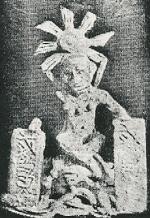 Wei Chu-Hsien received pictures showing ancient Chinese characters from scholars from the U.S., Peru, Mexico and Uruguay after getting in touch with Prof. Lau Tun-li in 1970.
Peru had been the place where most of the potteries, and jade / silver articles carrying Chinese characters had been located.
Most notable would be a silver artifact of a nude goddess excavated by Corde de Gugui on Mt Truillo in northern Peru in 1865. Wei Chu-Hsien pointed that the sunflower goddess, sitting on a turtle with a snake winding around it, had two plates in her hands, with Chinese characters 'wu-dang shan' or Mt Wudang-shan inscribed. In Mt Wudang area of China's northern Hubei Prov, the snake-turtle coupling was treated as a divine spirit called 'xuan-wu' during China's south-north dynasty time period.
Wei Chu-Hsien received pictures showing ancient Chinese characters from scholars from the U.S., Peru, Mexico and Uruguay after getting in touch with Prof. Lau Tun-li in 1970.
Peru had been the place where most of the potteries, and jade / silver articles carrying Chinese characters had been located.
Most notable would be a silver artifact of a nude goddess excavated by Corde de Gugui on Mt Truillo in northern Peru in 1865. Wei Chu-Hsien pointed that the sunflower goddess, sitting on a turtle with a snake winding around it, had two plates in her hands, with Chinese characters 'wu-dang shan' or Mt Wudang-shan inscribed. In Mt Wudang area of China's northern Hubei Prov, the snake-turtle coupling was treated as a divine spirit called 'xuan-wu' during China's south-north dynasty time period.
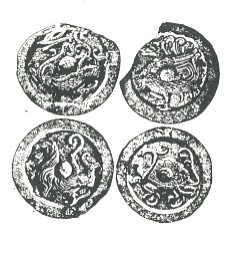 Ancient classics Wu-zi (military strategist Wu Qi of the Warring State time period) listed 'xuan-wu' together with three other divine spirits of 'qing long' (green dragon which was speculated to be the sea-horse by Wei), 'bai hu' (white tiger which used to exist in China 2000 years ago but now are available in India only), and 'zhu que' (red bird).
Ancient classics Wu-zi (military strategist Wu Qi of the Warring State time period) listed 'xuan-wu' together with three other divine spirits of 'qing long' (green dragon which was speculated to be the sea-horse by Wei), 'bai hu' (white tiger which used to exist in China 2000 years ago but now are available in India only), and 'zhu que' (red bird).
Artifacts of the four divine spirits were also found on stone coffins excavated in Korea and Manchuria.
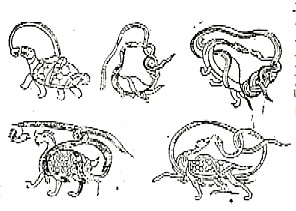 Wei Chu-Hsien pointed out that the southside spirit of red-bird and the northside spirit of snake-turtle coupling were both imports since snakes and turtles rarely existed in the deep north area of China. [Wei Chu-Hsien stated that the Shang Chinese, on basis of oracle bone words feng (phoenix people) lu (surrender) bai (hundred), had at one time received hundreds of turtles from the ancient Indonesians and Malaysians as tributes and later used the turtle shell for inscribing the oracle characters.] Wei Chu-Hsien cited numerous records stating that 'xuan-wu' was not a spirit invented in China, but an import. Wei Chu-Hsien came to a natural conclusion that the ancient Chinese, more than 2500-3700 years ago, had contacts with Central America's tropical tribesmen who adored the snake-turtle coupling as a spirit.
(Did the White Tigers of India ever roamed the Chinese continent? Or the White Tiger spirit was also an import?)
Wei Chu-Hsien pointed out that the southside spirit of red-bird and the northside spirit of snake-turtle coupling were both imports since snakes and turtles rarely existed in the deep north area of China. [Wei Chu-Hsien stated that the Shang Chinese, on basis of oracle bone words feng (phoenix people) lu (surrender) bai (hundred), had at one time received hundreds of turtles from the ancient Indonesians and Malaysians as tributes and later used the turtle shell for inscribing the oracle characters.] Wei Chu-Hsien cited numerous records stating that 'xuan-wu' was not a spirit invented in China, but an import. Wei Chu-Hsien came to a natural conclusion that the ancient Chinese, more than 2500-3700 years ago, had contacts with Central America's tropical tribesmen who adored the snake-turtle coupling as a spirit.
(Did the White Tigers of India ever roamed the Chinese continent? Or the White Tiger spirit was also an import?)
2) The Chinese characters of a name inscribed on a high mountain in Peru
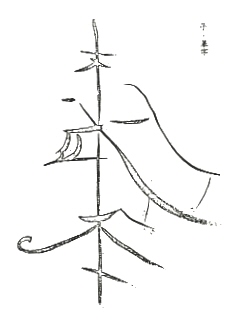 Wei Chu-Hsien received, via HK consul Marto F. Rbatde Azva, pictures taken by Prof. Daniel Ruzo of inscriptions on Marcahuasi Plateau which was about 3800-4000 meters above sea level. Wei Chu-Hsien recognized 6 characters and the picture of a man with three eyes. The 6 characters would be 'Mu (wood, a surname) Wu-Ben (given name, meaning martial principle), Sui (hence) Wei (made into) Ji (a record)'. The picture of three-eyes man was speculated by Wei Chu-Hsien to have relation to the legendary one-arm and three-eye Qigong-guo statelet as recorded in Shan Hai Jing. Wei Chu-Hsien cited the claim of Guo Pu of the Jinn Dynasty that the Qigong-guo people had visited the first Shang Dynasty overlord in the 18th century B.C. Later legendary novel Feng Shen Bang wrote about the three-eyes god. Wei Chu-Hsien, by examining the font shape of the characters, concluded that someone called Mu Wuben visited Peru in the 1st century A.D. in search of the legendary Qigong-guo and left his name on the high mountain.
Wei Chu-Hsien received, via HK consul Marto F. Rbatde Azva, pictures taken by Prof. Daniel Ruzo of inscriptions on Marcahuasi Plateau which was about 3800-4000 meters above sea level. Wei Chu-Hsien recognized 6 characters and the picture of a man with three eyes. The 6 characters would be 'Mu (wood, a surname) Wu-Ben (given name, meaning martial principle), Sui (hence) Wei (made into) Ji (a record)'. The picture of three-eyes man was speculated by Wei Chu-Hsien to have relation to the legendary one-arm and three-eye Qigong-guo statelet as recorded in Shan Hai Jing. Wei Chu-Hsien cited the claim of Guo Pu of the Jinn Dynasty that the Qigong-guo people had visited the first Shang Dynasty overlord in the 18th century B.C. Later legendary novel Feng Shen Bang wrote about the three-eyes god. Wei Chu-Hsien, by examining the font shape of the characters, concluded that someone called Mu Wuben visited Peru in the 1st century A.D. in search of the legendary Qigong-guo and left his name on the high mountain.
3) 23 Chinese characters of 'ya' inscribed on a pottery excavated in Mexico
Wei Chu-Hsien explained that the Mexico pottery had 23 'ya' characters inscribed because the base of the pottery was too small to fill up another two characters to make a total of 25 which would be symbolic of twenty-five clans of Huangdi the Yellow Lord. Wei Chu-Hsien cited Jinn Yu section of ancient classics Guo Yu to translate the original meaning of 'ya' as lineage, something to mean that Huangdi's 25 sons had established their independent clans. As to the reason that the pottery was excavated in Mexico, Wei Chu-Hsien cited the ancient dynastic transition of Shang-Zhou as the possible cause.
 Wei Chu-Hsien rephrased the Shang-Zhou story as follows: Last Shang Lord King Zhouwang campaigned against the 'Ren-fang-guo' statelet on the Shandong Peninsula;
after defeating Ren-fang-guo, Zhouwang led a few soldiers back to the capital of Chaoge for the lunar new year celebration;
upon hearing of Zhouwang's return with a light force, Zhou Lord Wuwang marched towards the Shang capital within six days and nights and encountered Zhouwang at the outskirts of Muye where the Zhou army defeated Shang's drunken soldiers;
Shang King Zhouwang committed suicide;
Zhou Lord Wuwang made Shang Prince Lufu inherit the Shang heritage and then went back to the west;
after Wuwang died, Zhou Duke Zhougong assumed the post of a regent for Zhou King Chengwang;
in the old Shang capital area, Shang Prince Lufu died;
Shang Prince Lufu's son, Prince Wugeng, conspired with the brothers of late Zhou King Wuwang in rebelling against Zhou Regent Zhougong;
Zhougong defeated the rebellion and furthermore campaigned against the Shang remnants who were left by Shang King Zhouwang in the Ren-fang-guo statelet on the Shandong Peninsula;
the Shang remnants hence fled towards two directions, with one branch moving to the Taiwan Island and the other branch to North America via the Bering Straits;
and those Shang people who arrived in North America stationed two chieftains on the east and west sides of the Bering Straits and conferred onto the two chieftains the titles of east-sea and north-sea kings,
i.e.,
east-sea and north-sea kings becoming the gods in revised book Shan Hai Jing.
Wei Chu-Hsien rephrased the Shang-Zhou story as follows: Last Shang Lord King Zhouwang campaigned against the 'Ren-fang-guo' statelet on the Shandong Peninsula;
after defeating Ren-fang-guo, Zhouwang led a few soldiers back to the capital of Chaoge for the lunar new year celebration;
upon hearing of Zhouwang's return with a light force, Zhou Lord Wuwang marched towards the Shang capital within six days and nights and encountered Zhouwang at the outskirts of Muye where the Zhou army defeated Shang's drunken soldiers;
Shang King Zhouwang committed suicide;
Zhou Lord Wuwang made Shang Prince Lufu inherit the Shang heritage and then went back to the west;
after Wuwang died, Zhou Duke Zhougong assumed the post of a regent for Zhou King Chengwang;
in the old Shang capital area, Shang Prince Lufu died;
Shang Prince Lufu's son, Prince Wugeng, conspired with the brothers of late Zhou King Wuwang in rebelling against Zhou Regent Zhougong;
Zhougong defeated the rebellion and furthermore campaigned against the Shang remnants who were left by Shang King Zhouwang in the Ren-fang-guo statelet on the Shandong Peninsula;
the Shang remnants hence fled towards two directions, with one branch moving to the Taiwan Island and the other branch to North America via the Bering Straits;
and those Shang people who arrived in North America stationed two chieftains on the east and west sides of the Bering Straits and conferred onto the two chieftains the titles of east-sea and north-sea kings,
i.e.,
east-sea and north-sea kings becoming the gods in revised book Shan Hai Jing.
4) The Chinese character of 'fan' (sail or wind) inscribed on a pottery excavated in Lima, Peru
Prof Wei Chu-Hisen's Expositions On Ancient America's Relics
Ancient America's Usage of Wood Strips for Writing
Ancient America's Usage of the TAOTIE Pattern with Similar Style as China's Shang Dynasty
Prof Wei Chu-Hisen's Expounding On the Plants & Animals
p. 449
Gourd - originally from America, known in China for thousands of years;
Sunflower, recorded in Zuo Zhuan , where Confucius commented on it;
Pumpkin, known as "jin gua" since the Tang-Soong dynasties, imported to China in the late Western Han, and in wide planting during the Eastern Han Dynasty;
Tobacco, known from the Warring States period of the Zhou Dynasty, and adopted in late Western Han Dynasty,
as commented by Liu Xiang when he saw someone smoking in Chang'an; imported to Manchuria since the Soong Dynasty time period,
and spread to the central plains by the Jin-Yuan dynasties, and widely planted in the Ming Dynasty. Seen in the court drawings from the early Ming Dynasty;
Potato, drawing seen in "Ben Cao" herbal book of the Soong Dynasty; first imported to China in the Warring States time period of the Zhou Dynasty;
2nd importation in Eastern Han. Widely planted in the Tang Dynasty. Third importation in the Ming Dynasty.
p 450
Peanuts: Imported to China in the Tang Dynasty. Recorded in "Shi Wu Ben Cao" of the Yuan Dynasty.
Written about in Changshu's county records about a dozen years after the Columbus' trip to America.
Tomato: Imported to China from America through Korea. Widely eaten in the Yuan Dynasty;
"Can dou" (Broad Beans): known in the Six-Dynasties' time period, and planted in the Yuan Dynasty;
"feng li" (Pineapple): known in the Six-Dynasties' time period, and planted in the Soong Dynasty;
Corn: known as "huang liang" or yellow sorghum in the ancient times, first recorded in Chu Ci, Er Ya from the Zhou Dynasty time period,
Hou Han Shu,
Sui Shu,
the Tang poems,
widely planted in Sichuan
Prof Wei Chu-Hisen's Expounding On the Metals & Precious Stones
Ancient Japanese claim of obtaining jades from some island 30,000-li to the east of Japan
TO BE CONTINUED !
|
|

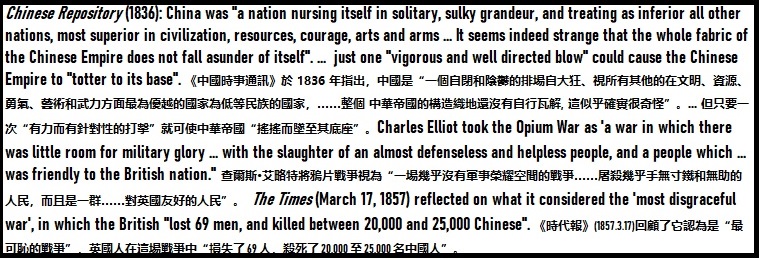
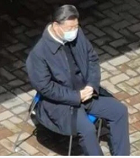








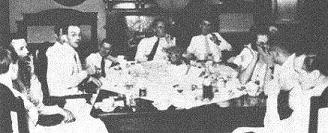
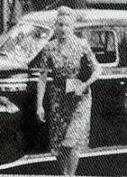
![Though, Anna Wang [Anneliese Martens], in her memoirs, expressed jealousy over Gong Peng by stating that the Anglo-American reporters had flattered the Chinese communists and the communist movement as a result of being entranced with the goldfish-eye'ed personal assistant of Zhou Enlai](GongPeng.jpg)








 In "China and America - Volume One", Prof. Wei Chu-Hsien stated that he, first coming across in 1961 a passage on six birds which flew backward as recorded in The Spring and Autumn Annals, had linked the 'yi' bird to America's hummingbirds.
(Prof Wei could be wrong about the hummingbird speculation.
Confucius' abridged chronicle Chun-qiu, which carried the record about five meteorites striking the Soong Principality and six 'yi' birds flying backwards during the 16th year of Lu Lord Xigong, or 644 B.C., was expounded in Zuo Zhuan as something to do with the strong gusty winds that beat back the birds' efforts at flying forward.
The 'yi' birds were known in Chinese as some kind of fish-preying herons that were painted at the top of the ships as a propitious sign.)
In "China and America - Volume One", Prof. Wei Chu-Hsien stated that he, first coming across in 1961 a passage on six birds which flew backward as recorded in The Spring and Autumn Annals, had linked the 'yi' bird to America's hummingbirds.
(Prof Wei could be wrong about the hummingbird speculation.
Confucius' abridged chronicle Chun-qiu, which carried the record about five meteorites striking the Soong Principality and six 'yi' birds flying backwards during the 16th year of Lu Lord Xigong, or 644 B.C., was expounded in Zuo Zhuan as something to do with the strong gusty winds that beat back the birds' efforts at flying forward.
The 'yi' birds were known in Chinese as some kind of fish-preying herons that were painted at the top of the ships as a propitious sign.)



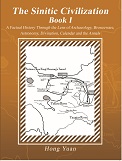


 Often researched upon by scholars would be a drawing by Liang Dynasty's Emperor Yuandi, entitled "zhi [duty or post] gong [tribute] tu [picture]" [
Often researched upon by scholars would be a drawing by Liang Dynasty's Emperor Yuandi, entitled "zhi [duty or post] gong [tribute] tu [picture]" [ Wei Chu-Hsien received pictures showing ancient Chinese characters from scholars from the U.S., Peru, Mexico and Uruguay after getting in touch with Prof. Lau Tun-li in 1970.
Peru had been the place where most of the potteries, and jade / silver articles carrying Chinese characters had been located.
Most notable would be a silver artifact of a nude goddess excavated by Corde de Gugui on Mt Truillo in northern Peru in 1865. Wei Chu-Hsien pointed that the sunflower goddess, sitting on a turtle with a snake winding around it, had two plates in her hands, with Chinese characters 'wu-dang shan' or Mt Wudang-shan inscribed. In Mt Wudang area of China's northern Hubei Prov, the snake-turtle coupling was treated as a divine spirit called 'xuan-wu' during China's south-north dynasty time period.
Wei Chu-Hsien received pictures showing ancient Chinese characters from scholars from the U.S., Peru, Mexico and Uruguay after getting in touch with Prof. Lau Tun-li in 1970.
Peru had been the place where most of the potteries, and jade / silver articles carrying Chinese characters had been located.
Most notable would be a silver artifact of a nude goddess excavated by Corde de Gugui on Mt Truillo in northern Peru in 1865. Wei Chu-Hsien pointed that the sunflower goddess, sitting on a turtle with a snake winding around it, had two plates in her hands, with Chinese characters 'wu-dang shan' or Mt Wudang-shan inscribed. In Mt Wudang area of China's northern Hubei Prov, the snake-turtle coupling was treated as a divine spirit called 'xuan-wu' during China's south-north dynasty time period.
 Ancient classics Wu-zi (military strategist Wu Qi of the Warring State time period) listed 'xuan-wu' together with three other divine spirits of 'qing long' (green dragon which was speculated to be the sea-horse by Wei), 'bai hu' (white tiger which used to exist in China 2000 years ago but now are available in India only), and 'zhu que' (red bird).
Ancient classics Wu-zi (military strategist Wu Qi of the Warring State time period) listed 'xuan-wu' together with three other divine spirits of 'qing long' (green dragon which was speculated to be the sea-horse by Wei), 'bai hu' (white tiger which used to exist in China 2000 years ago but now are available in India only), and 'zhu que' (red bird).
 Wei Chu-Hsien pointed out that the southside spirit of red-bird and the northside spirit of snake-turtle coupling were both imports since snakes and turtles rarely existed in the deep north area of China. [Wei Chu-Hsien stated that the Shang Chinese, on basis of oracle bone words feng (phoenix people) lu (surrender) bai (hundred), had at one time received hundreds of turtles from the ancient Indonesians and Malaysians as tributes and later used the turtle shell for inscribing the oracle characters.] Wei Chu-Hsien cited numerous records stating that 'xuan-wu' was not a spirit invented in China, but an import. Wei Chu-Hsien came to a natural conclusion that the ancient Chinese, more than 2500-3700 years ago, had contacts with Central America's tropical tribesmen who adored the snake-turtle coupling as a spirit.
(Did the White Tigers of India ever roamed the Chinese continent? Or the White Tiger spirit was also an import?)
Wei Chu-Hsien pointed out that the southside spirit of red-bird and the northside spirit of snake-turtle coupling were both imports since snakes and turtles rarely existed in the deep north area of China. [Wei Chu-Hsien stated that the Shang Chinese, on basis of oracle bone words feng (phoenix people) lu (surrender) bai (hundred), had at one time received hundreds of turtles from the ancient Indonesians and Malaysians as tributes and later used the turtle shell for inscribing the oracle characters.] Wei Chu-Hsien cited numerous records stating that 'xuan-wu' was not a spirit invented in China, but an import. Wei Chu-Hsien came to a natural conclusion that the ancient Chinese, more than 2500-3700 years ago, had contacts with Central America's tropical tribesmen who adored the snake-turtle coupling as a spirit.
(Did the White Tigers of India ever roamed the Chinese continent? Or the White Tiger spirit was also an import?)
 Wei Chu-Hsien received, via HK consul Marto F. Rbatde Azva, pictures taken by Prof. Daniel Ruzo of inscriptions on Marcahuasi Plateau which was about 3800-4000 meters above sea level. Wei Chu-Hsien recognized 6 characters and the picture of a man with three eyes. The 6 characters would be 'Mu (wood, a surname) Wu-Ben (given name, meaning martial principle), Sui (hence) Wei (made into) Ji (a record)'. The picture of three-eyes man was speculated by Wei Chu-Hsien to have relation to the legendary one-arm and three-eye Qigong-guo statelet as recorded in Shan Hai Jing. Wei Chu-Hsien cited the claim of Guo Pu of the Jinn Dynasty that the Qigong-guo people had visited the first Shang Dynasty overlord in the 18th century B.C. Later legendary novel Feng Shen Bang wrote about the three-eyes god. Wei Chu-Hsien, by examining the font shape of the characters, concluded that someone called Mu Wuben visited Peru in the 1st century A.D. in search of the legendary Qigong-guo and left his name on the high mountain.
Wei Chu-Hsien received, via HK consul Marto F. Rbatde Azva, pictures taken by Prof. Daniel Ruzo of inscriptions on Marcahuasi Plateau which was about 3800-4000 meters above sea level. Wei Chu-Hsien recognized 6 characters and the picture of a man with three eyes. The 6 characters would be 'Mu (wood, a surname) Wu-Ben (given name, meaning martial principle), Sui (hence) Wei (made into) Ji (a record)'. The picture of three-eyes man was speculated by Wei Chu-Hsien to have relation to the legendary one-arm and three-eye Qigong-guo statelet as recorded in Shan Hai Jing. Wei Chu-Hsien cited the claim of Guo Pu of the Jinn Dynasty that the Qigong-guo people had visited the first Shang Dynasty overlord in the 18th century B.C. Later legendary novel Feng Shen Bang wrote about the three-eyes god. Wei Chu-Hsien, by examining the font shape of the characters, concluded that someone called Mu Wuben visited Peru in the 1st century A.D. in search of the legendary Qigong-guo and left his name on the high mountain.
 Wei Chu-Hsien rephrased the Shang-Zhou story as follows: Last Shang Lord King Zhouwang campaigned against the 'Ren-fang-guo' statelet on the Shandong Peninsula;
after defeating Ren-fang-guo, Zhouwang led a few soldiers back to the capital of Chaoge for the lunar new year celebration;
upon hearing of Zhouwang's return with a light force, Zhou Lord Wuwang marched towards the Shang capital within six days and nights and encountered Zhouwang at the outskirts of Muye where the Zhou army defeated Shang's drunken soldiers;
Shang King Zhouwang committed suicide;
Zhou Lord Wuwang made Shang Prince Lufu inherit the Shang heritage and then went back to the west;
after Wuwang died, Zhou Duke Zhougong assumed the post of a regent for Zhou King Chengwang;
in the old Shang capital area, Shang Prince Lufu died;
Shang Prince Lufu's son, Prince Wugeng, conspired with the brothers of late Zhou King Wuwang in rebelling against Zhou Regent Zhougong;
Zhougong defeated the rebellion and furthermore campaigned against the Shang remnants who were left by Shang King Zhouwang in the Ren-fang-guo statelet on the Shandong Peninsula;
the Shang remnants hence fled towards two directions, with one branch moving to the Taiwan Island and the other branch to North America via the Bering Straits;
and those Shang people who arrived in North America stationed two chieftains on the east and west sides of the Bering Straits and conferred onto the two chieftains the titles of east-sea and north-sea kings,
i.e.,
east-sea and north-sea kings becoming the gods in revised book Shan Hai Jing.
Wei Chu-Hsien rephrased the Shang-Zhou story as follows: Last Shang Lord King Zhouwang campaigned against the 'Ren-fang-guo' statelet on the Shandong Peninsula;
after defeating Ren-fang-guo, Zhouwang led a few soldiers back to the capital of Chaoge for the lunar new year celebration;
upon hearing of Zhouwang's return with a light force, Zhou Lord Wuwang marched towards the Shang capital within six days and nights and encountered Zhouwang at the outskirts of Muye where the Zhou army defeated Shang's drunken soldiers;
Shang King Zhouwang committed suicide;
Zhou Lord Wuwang made Shang Prince Lufu inherit the Shang heritage and then went back to the west;
after Wuwang died, Zhou Duke Zhougong assumed the post of a regent for Zhou King Chengwang;
in the old Shang capital area, Shang Prince Lufu died;
Shang Prince Lufu's son, Prince Wugeng, conspired with the brothers of late Zhou King Wuwang in rebelling against Zhou Regent Zhougong;
Zhougong defeated the rebellion and furthermore campaigned against the Shang remnants who were left by Shang King Zhouwang in the Ren-fang-guo statelet on the Shandong Peninsula;
the Shang remnants hence fled towards two directions, with one branch moving to the Taiwan Island and the other branch to North America via the Bering Straits;
and those Shang people who arrived in North America stationed two chieftains on the east and west sides of the Bering Straits and conferred onto the two chieftains the titles of east-sea and north-sea kings,
i.e.,
east-sea and north-sea kings becoming the gods in revised book Shan Hai Jing.










